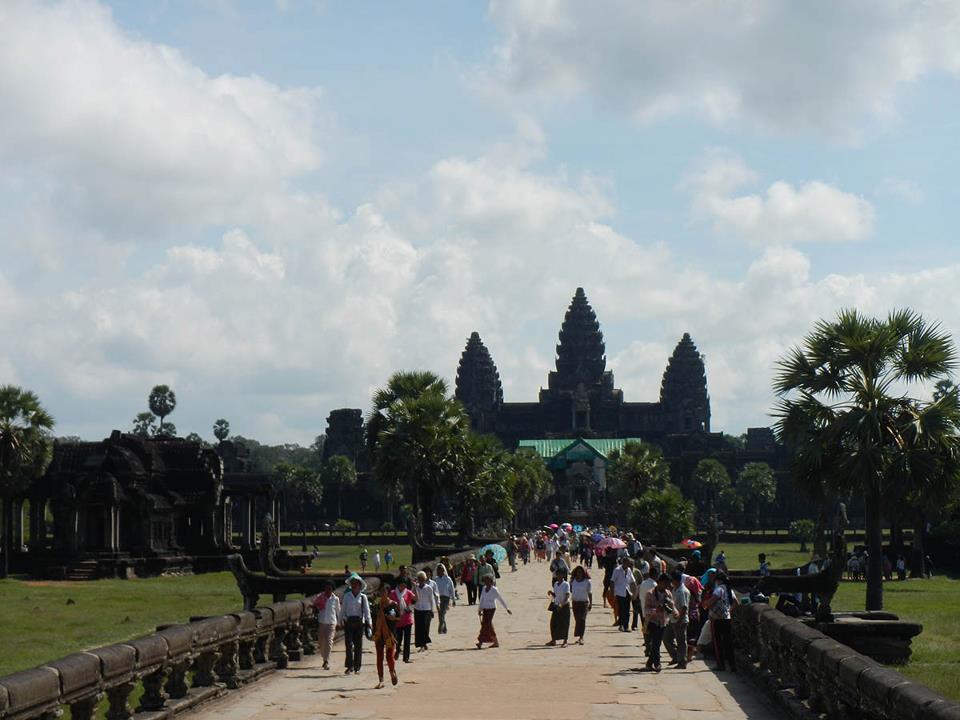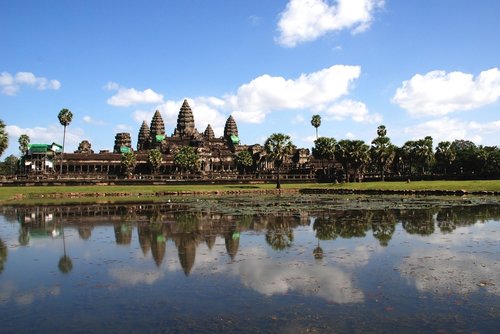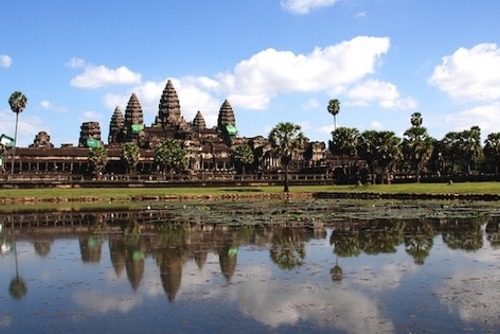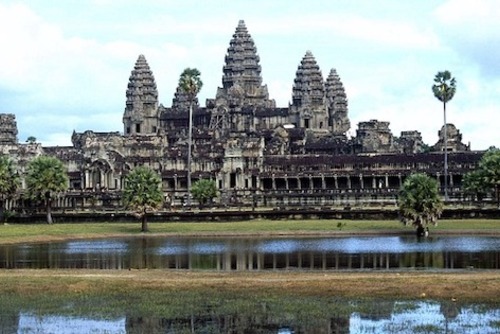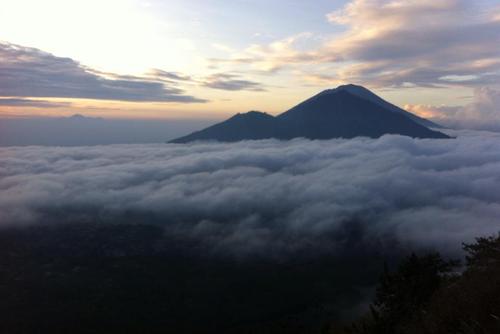Angkor Wat is a mysterious temple complex, a location that has withstood war, the elements, and time. Said to be the largest religious monument in the world, it is an architectural and spiritual wonder.
It is a place that tells an unwritten story that could only crystallize in one’s imagination, yet it was built by real humans, over fifty thousand, with the help of over four thousand elephants.
Here are five tips to enhance your experience as you explore the ancient grounds, checking “Angkor Wat" off on your everevolving bucket list.
1. Understand the Meaning Behind the Monuments
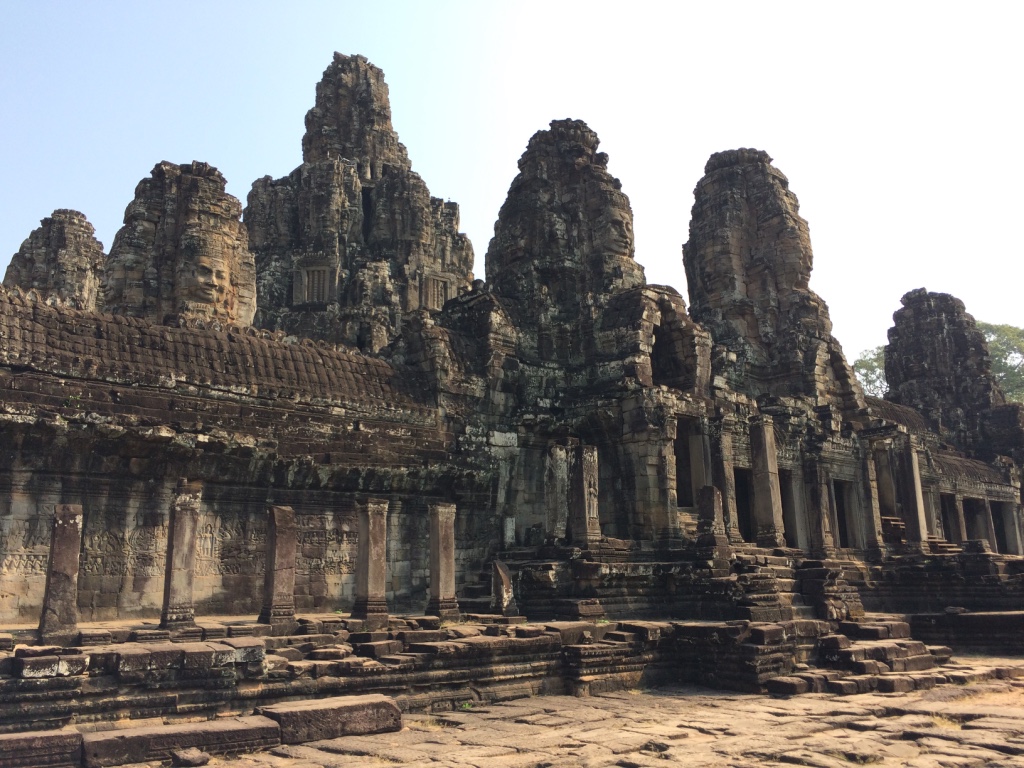
Though Angkor Wat is currently used as a Buddhist temple, it was originally built to honor the Hindu Gods, giving them a residence here on Earth.
The protective moat around the complex represents the cosmic ocean, a mythological concept depicting the source of the gods (devas), the world, and life. It surrounds the temple like a protective aura.
Before stepping on the bridge that takes you to the abode of the gods, you will see statues of seven-headed snakes called nagas. These mythical serpents symbolize the deity of the ocean and mountains.
Angkor Wat is easily one of the best places to visit in Cambodia, it is so breathtaking that it can captivate a visitor who has almost no background knowledge of its history or symbolism.
However, experiencing its majesty without understanding its meaning is like looking at illustrations in a story without reading the words.
2. Read Temple of a Thousand Faces by John Shors
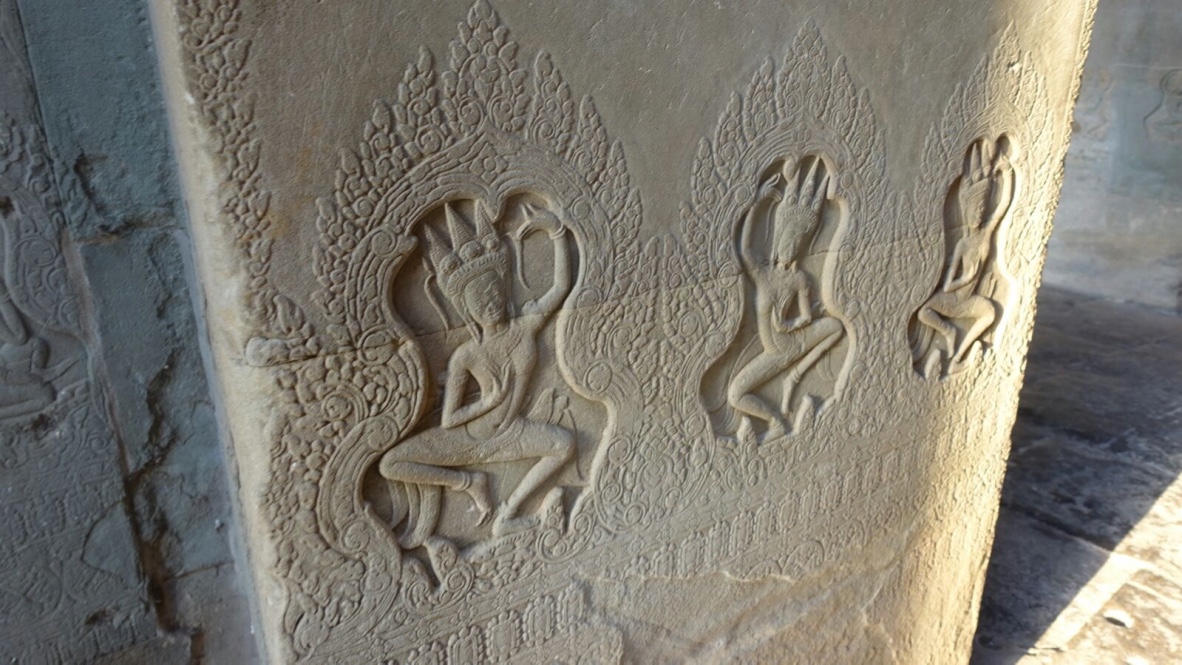
The book’s first sentence reads, “The temple of Angkor Wat had been designed to house the Hindu Gods but looked as if it had been built by them.”
The reader’s imagination is immediately invited into the setting of the story where an epic war takes place between the Khmers and Chams. Shors weaves true facts about the history and architecture of Angkor into his fictional story of revenge, heroism, loyalty, spirituality, and love.
‘Come and follow me,” she said. “This is a world of infinite dawns and today is just one day.’ - Ajadevi in Temple of a Thousand Faces by John Shors
3. Observe Up-close
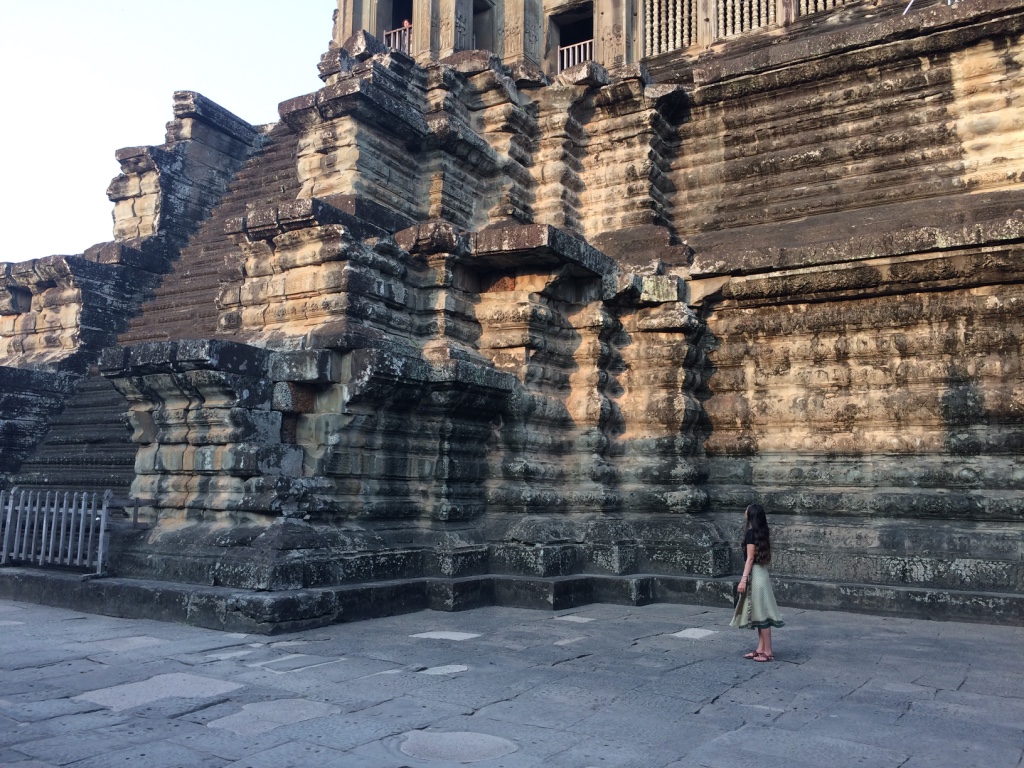
The sandstone walls within Angkor are adorned with intricate carvings called bas-reliefs.
I found myself standing and staring in awe, as sunlight and shadows danced across the the illustrations. Each step you take, you see new characters of stories sculpted into the walls. One bas-relief depicts the ancient Indian epic, The Mahabarat. Mandalas inscribed in the stone represent the map of the cosmos.
Perhaps the most well-known bas-relief at Angkor Wat is The Churning of the Sea and Milk. This two hundred foot long carving illustrates the Hindu myth of the cause of creation. One can observe a battle of good versus evil with ninety-two demons on one side, a serpent in the middle, and eighty-eight gods on the other side including Shiva, Brahma, and the goddess Lakshmi.
Some of my favorite parts were the celestial carvings of asparas, representations of the feminine spirit. Estimated to contain over two thousand asparas, it is obvious that the creators of Angkor Wat did not only want to honor the gods, but also wanted to honor women.
4. Engage Your Imagination
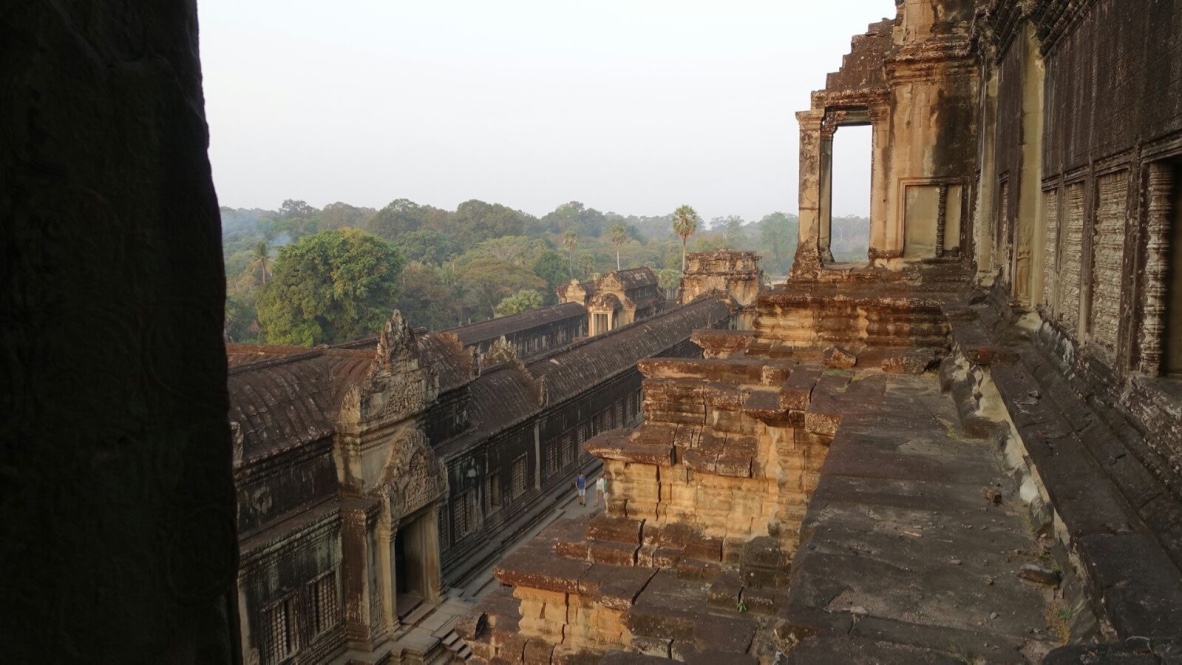
As you cross the walkway towards Angkor Wat, imagine you are crossing the bridge from Earth to Heaven.
As you ascend up the steep stairs of Bakan Sanctuary, imagine you are climbing towards the kingdom of gods. Looking out the windows from the highest level, you can imagine Angkor from the eyes of a king overlooking his Khmer empire. Instead of tourists, imagine blacksmiths, fisherman, farmers, and priests.
Imagine Khmer women washing clothes in the pools and children splashing in the water to stay cool. In the courtyard you’re likely to see a collection of rock piles. Imagine Prince Jayavar, the main character from Temple of a Thousand Faces, stacking and balancing stones to practice patience.
5. Explore Beyond the Temples
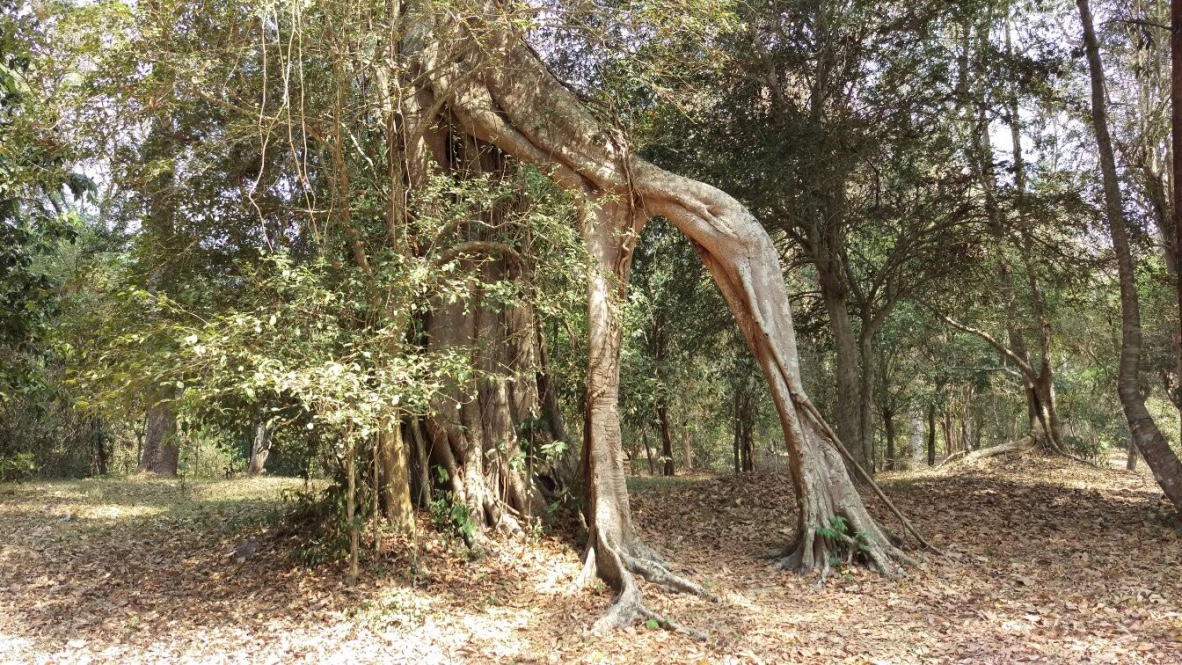
At dawn, a flood of foreigners gather around the lake to capture epic photographs of sunrise.
As we tend to look where every one else is looking, we can miss out on other bursts of beauty. Looking beyond the temple, in the distance you will see a beautiful display of canopies, sheltering the creatures of Cambodia. Looking into the ponds, you can observe the lotus flowers slowly opening their pink petals with the touch of the morning sun.
Often, the best memories are made in the most unlikely places. As my partner and I wandered beyond the temple, away from the tourist traffic and into the quiet forest, we found a beautiful banyan tree. “It’s a wishing tree,” I said. Together, we stood under the aerial, arched roots, closed our eyes, and made a wish.
Angkor Wat is a standing story of symbolism and supremacy. But much of life’s meaning comes from finding meaning on our own. As I looked at the tree I saw two souls rising above the surface, entwining their roots, and becoming one. How beautiful is our Earth?
Plan a Trip to Angkor Wat
Whether you are planning a holiday, a south east Asia backpacking adventure or like the idea of a gap year in Cambodia, you really need to add Angkor Wat to your itinerary.
If you would like to see more of the country there are literally hundreds of Cambodia tours available to book all year round and most include Siem Reap and Angkor Wat in the itinerary.
If you would like to do more than just sightseeing there are lots of options for foreigners, you could apply to volunteer in Cambodia for a rewarding experience. Or for paid work, teaching in Cambodia is really popular.
Angkor Wat really is one of the top destinations in south east Asia, now go explore this magnificent temples for yourself.
“The world isn’t a place of black and white, but of color.” - Ajadevi
By Katherine H. Cross

